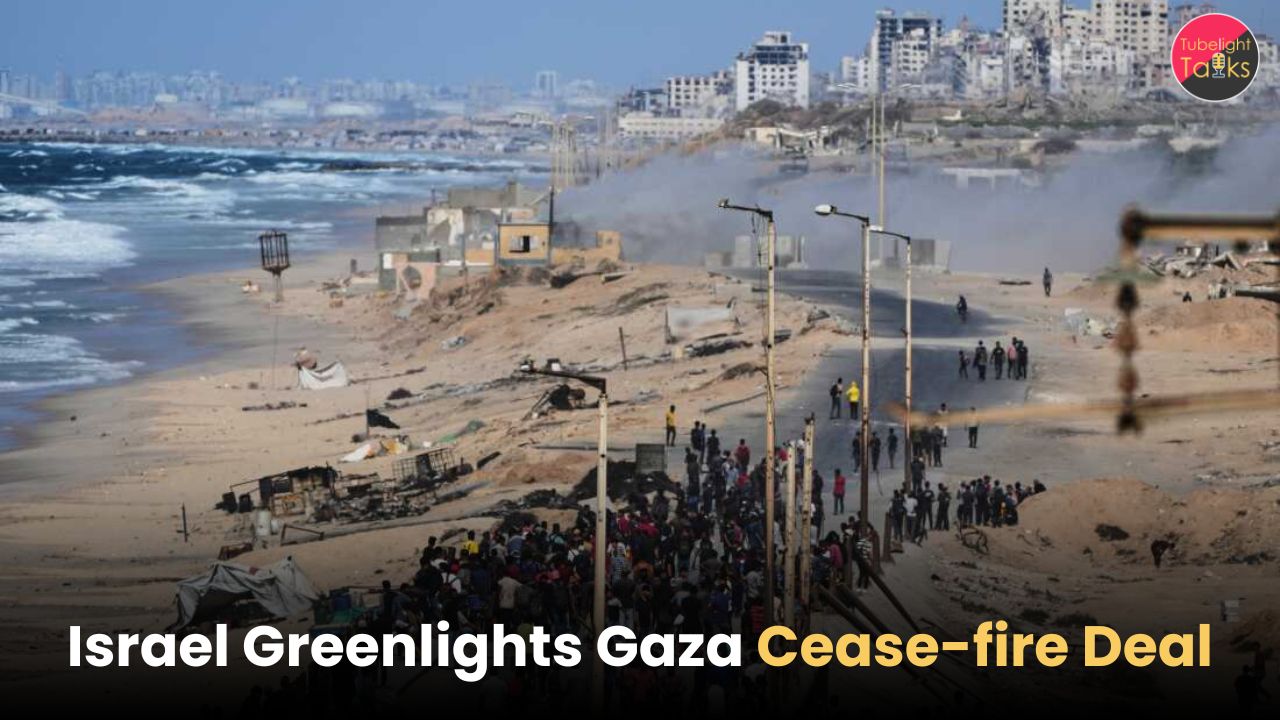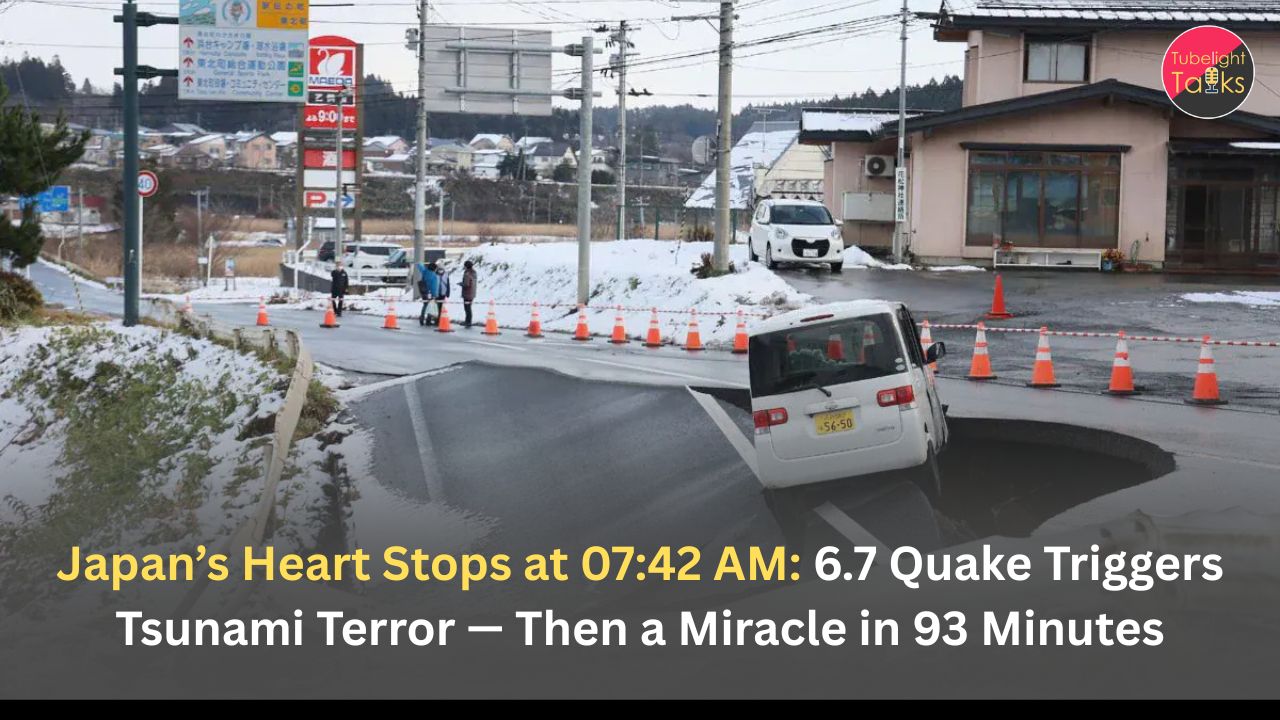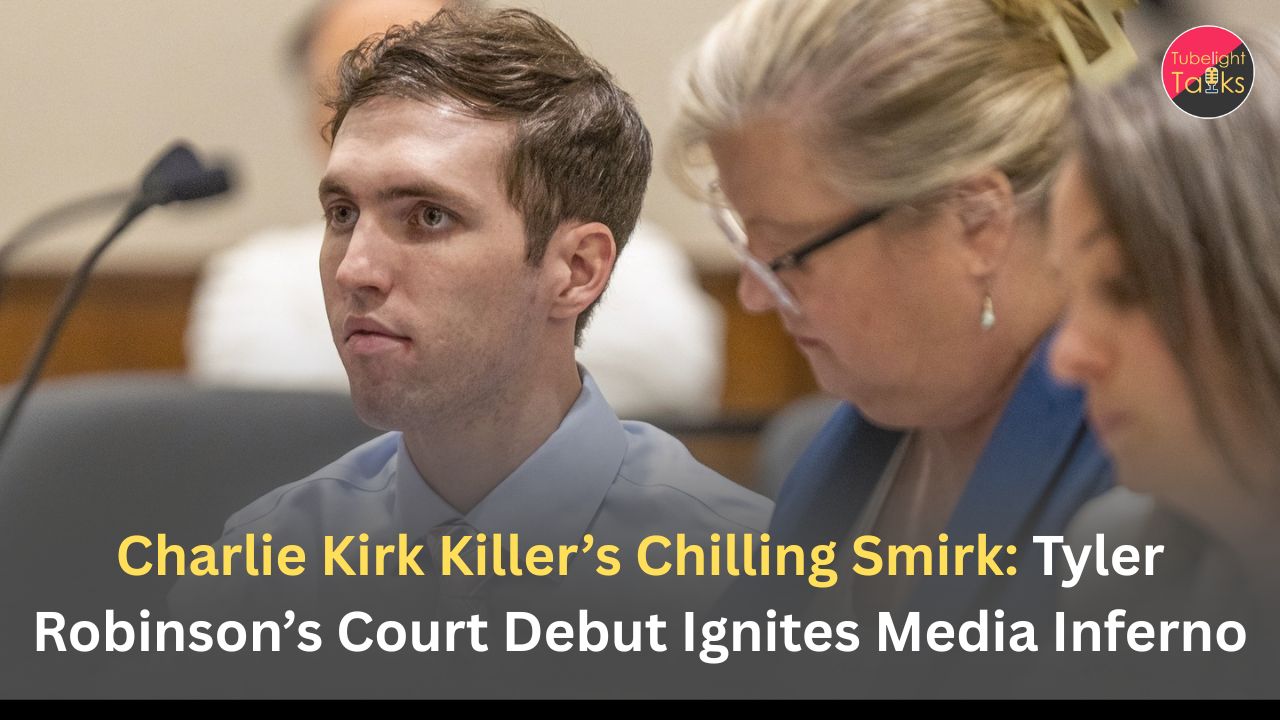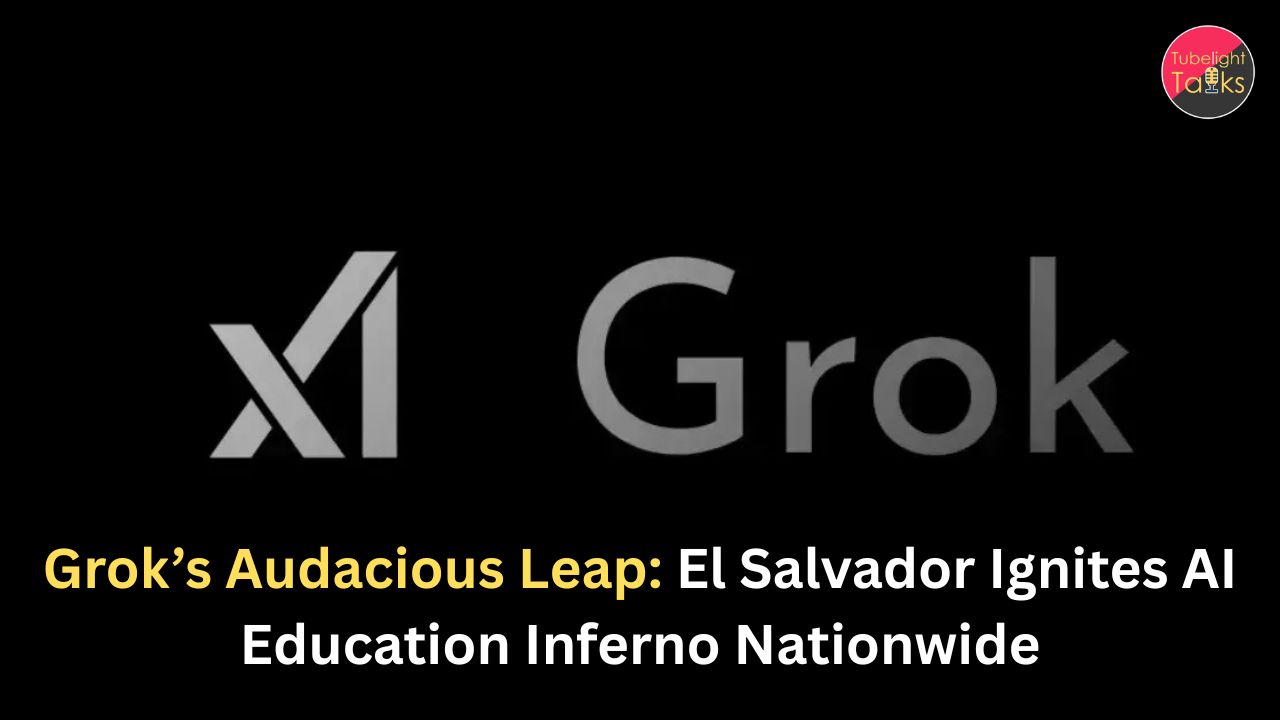Jerusalem / Gaza, October 2025— In a dramatic turn in the two-year conflict, Israel’s cabinet has formally approved a U.S.-brokered cease-fire and hostage-prisoner exchange agreement with Hamas, paving the way for the gradual winding down of the war. The first phase of the deal is already entering implementation, with Israeli forces withdrawing, hostages set to be freed, and large-scale humanitarian aid about to pour into a devastated Gaza Strip.
Gaza Cease-fire Deal : Key Highlights
- Inside the Gaza Truce: Key Terms of Israel’s Historic Cease-fire Agreement
- Hope Returns to Gaza: Cease-fire Enforced, Prisoner Lists Released
- Hope Amid Ruins: Cease-fire Takes Hold as Aid and Hostage Releases Begin in Gaza
- Behind the Gaza Deal: Power, Politics, and the Risks Both Sides Face
- Cease-fire Under Pressure: The Unresolved Fault Lines Ahead
- Cease-fire Brings Hope — and Hard Questions — for Gaza’s Future
- A Fragile Ceasefire: Glimmers of Hope After 700 Days of War
- From Conflict to Calm: The Supreme Solution Through Devotion and Spiritual Knowledge
The Agreement: What Israel Approved
Under the terms agreed in negotiations mediated by the United States, Egypt, Qatar, and Turkey, the Israeli cabinet’s approval authorizes:
- A cease-fire to begin immediately or within 24 hours of ratification.
- A partial redeployment of Israeli forces to an agreed “line,” retaining control over approximately 50–53 percent of Gaza in the first phase.
- A “72-hour window” for Hamas to hand over all remaining hostages (living and deceased) once Israeli withdrawal is complete.
- The release by Israel of some 250 Palestinian security prisoners (serving life sentences) plus about 1,700 Gazans detained during the war.
- The opening of humanitarian aid corridors into Gaza, allowing trucks and supplies to flow into a population facing famine and collapse of services
- The deployment of 200 U.S. troops (planners, logistics, security) in a civil-military coordination center in Israel (not inside Gaza) to assist oversight and implementation.
The Israeli government emphasized that this is only the first phase; many core issues remain unresolved, including Gaza’s governance, Hamas’s disarmament, and a full Israeli withdrawal.
Cease-fire Now in Force; Hostage Release Countdown Begins
Shortly after approval, Israeli authorities announced that the cease-fire was in effect. The Israel Defense Forces (IDF) have begun pulling back from parts of Gaza to the designated line. Tens of thousands of displaced Palestinians have already begun returning northward in Gaza, many toward heavily damaged neighborhoods.
With the Israeli pullback nearing completion, the 72-hour window for Hamas to deliver on the hostage release has begun. Israeli officials expect 48 hostages still in Gaza (of which around 20 are believed to be alive) to be released by Monday or Tuesday.
Israel has published the list of 250 security prisoners to be freed (and the names of 1,722 Gazans) as part of the deal.
Humanitarian Imperative: Aid Enters Gaza
One of the critical components of the agreement is a massive aid push into Gaza. The enclave faces widespread destruction, severe shortages of food, water, and medical supplies, and a decimated infrastructure.
The United Nations and aid agencies are preparing to surge humanitarian trucks into Gaza, aiming to deliver desperately needed supplies once security conditions allow. However, aid distribution will depend on full compliance by both parties and Israeli withdrawal to the agreed lines.
Political Messaging and Risks
Prime Minister Benjamin Netanyahu used his public remarks to frame the deal as a strategic victory. He affirmed that the cease-fire does not imply Israel relinquishing its demands: Hamas must disarm, or the military option could be reintroduced. Netanyahu also tied the deal to his internal political calculations, seeking to solidify his image as a tough security leader.
On the Hamas side, chief negotiator Khalil al-Hayya declared that the war was over and claimed Hamas had secured guarantees from U.S. mediators. Still, Hamas has resisted certain deal terms, such as foreign oversight of Gaza or full disarmament.
Domestic opposition remains. Hard-line Israeli cabinet members had threatened to derail the deal or refuse to vote for it, especially over the release of prisoners. Similarly, some factions within Gaza and among Palestinian political movements reject any arrangement that sidelines continued Palestinian sovereignty or that allows international trusteeship.
Challenges Ahead & Red Lines
While the first phase is underway, the following challenges loom:
- Full compliance by both sides. Any deviation—delays in withdrawal or hostage handover—could unravel the deal.
- Hamas disarmament is a central Israeli demand ; how (and if) it is enforced remains uncertain.
- Gaza governance and reconstruction : Who will administer Gaza post-ceasefire? Will there be an international or transitional authority?
- Security guarantees : Israel is likely to insist on long-term security mechanisms to prevent future rocket attacks or infiltration.
- Verification and enforcement : The role of third-party monitors, inspections, or peacekeeping forces must be determined.
- Humanitarian access : Even if the deal allows aid, insecurity or blockades could hamper distribution to the needy.
- Political fallout : In Israel, right-wing factions may threaten coalition collapse; for Palestinian politics, the balance between Hamas, Palestinian Authority, and other actors will shift.
The Human Face: Return, Recovery, and Uncertainty
For Palestinians, the cease-fire is a bittersweet moment. Tens of thousands have returned north to inspect ruins of their homes, facing devastation, rubble, and homelessness. Many houses and neighborhoods simply no longer exist. For hostages and their families, the coming days are the culmination of deep anguish and long uncertainty.
Medical experts warn that survivors may suffer long-term physical and psychological trauma, having endured malnutrition, injuries, confinement, or neglect.
Cautious Hope Amid Conflict: The Fragile Path to Peace in Gaza
As the first hostages are freed and Israel begins to withdraw, global attention will now shift to whether this phase can hold—and whether subsequent phases deliver a durable peace. The coming days and weeks will test the resolve, trust, and capacity of all parties. Should implementation falter, there is serious risk of renewed escalation.
But for now, after more than 700 days of relentless war, there is cautious hope that a transformative moment is at hand.
Beyond Human Efforts: How Divine Guidance Brings Lasting Peace
The recent cease-fire in Gaza, with hostages being freed and aid entering the war-torn region, highlights the fragility of human-led peace. Saint Rampal Ji Maharaj, through the sacred scriptures like Bhagavad Gita,Four Vedas, Shri Guru Granth Sahib, and Vishnu Purana, teaches that true and lasting peace can never be achieved by human strategies alone. Wars, conflicts, and political agreements may temporarily halt violence, but only divine intervention—the guidance of a true spiritual Guru—can resolve the root causes of suffering, hatred, and ego-driven disputes.
As the people of Gaza face devastation, loss, and uncertainty, Maharaj Ji emphasizes the importance of turning toward God, practicing devotion, and adhering to righteous conduct (Satkarmas). Human efforts may bring temporary relief, but only Gyaan (spiritual knowledge) and Bhakti (devotion to the Supreme God, as described in the scriptures) can bring permanent harmony among individuals and nations. The scriptures warn that without divine consciousness, worldly peace remains fleeting, and conflicts recur.
Thus, while the Gaza cease-fire brings hope and temporary respite, Maharaj Ji’s teachings remind humanity that true salvation, lasting peace, and protection from calamities arise only when society embraces spiritual knowledge, divine guidance, and devotion to God.
Unlock the Secrets of True Devotion and Divine Knowledge from the Holy Scriptures. Visit www.jagatgururampalji.org
or experience spiritual discourses on the “Sant Rampalji Maharaj” YouTube channel.










